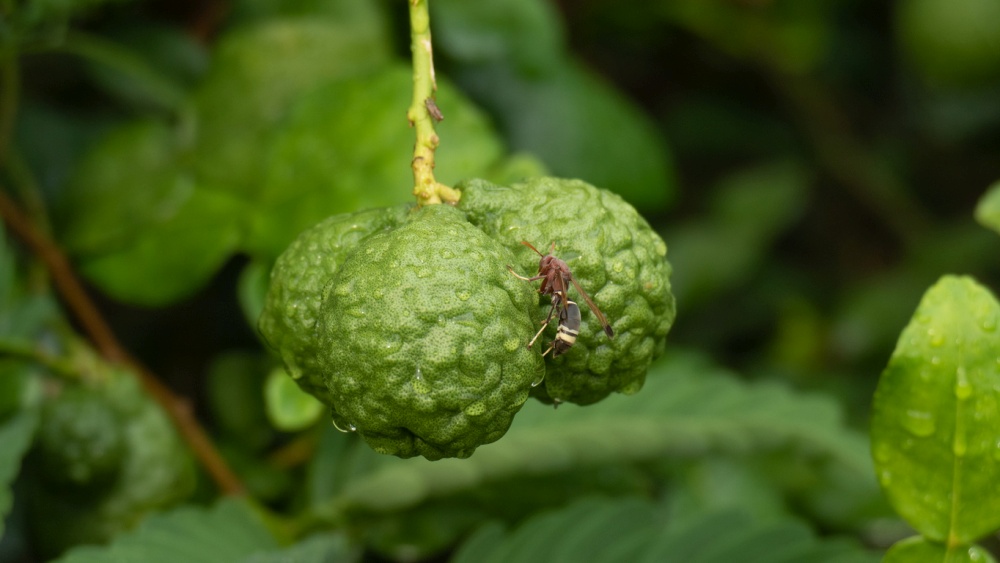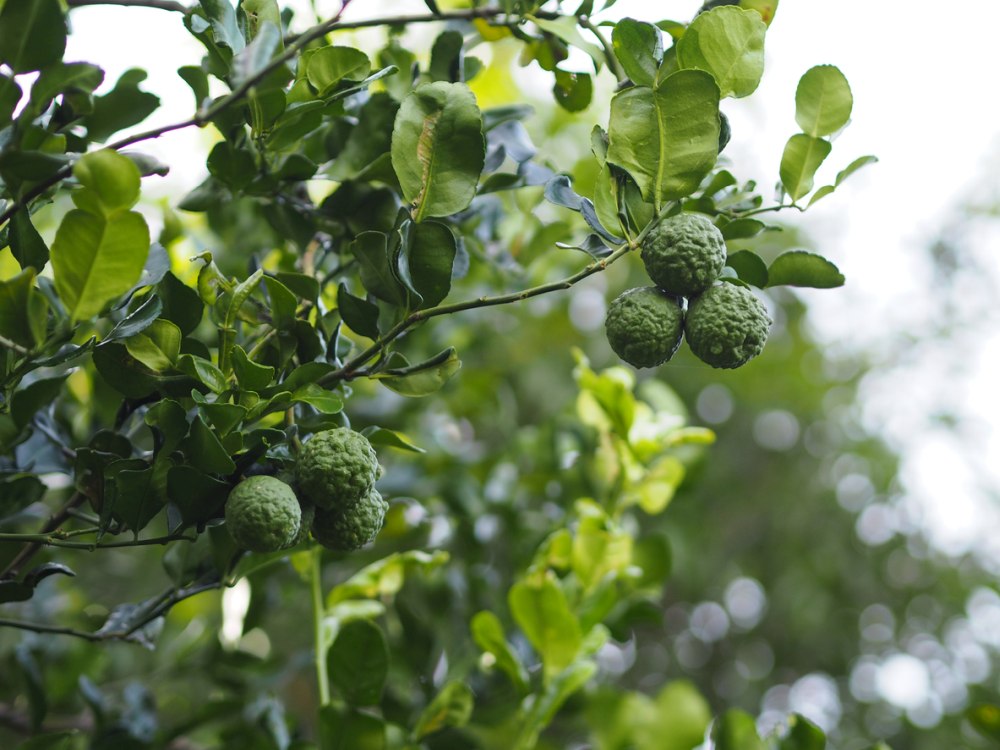Kaffir Lime Tree – How To Grow And Care For The Kaffir Lime
Nothing gives your garden that exotic touch like the kaffir lime tree. From the aromatic leaves to the juicy fruits, the kaffir lime transforms your garden and your cuisine in ways only a few other plants or trees can. You can add the leaves to your curry, stir-fries, and soups to give them a new flavor. As for the garden, the color and fragrance this tree adds to your landscape, make it worth all the work you put into it.
Not that this is a hard tree to grow. It doesn’t need much in the way of nourishment, water, or maintenance. Even the little care it requires, this tree pays back in abundance. So how do you grow the kaffir lime tree and how to make sure it thrives, flowers, and gives you fruit?
All about the Kaffir Lime Tree
The first thing you need to know about the kaffir lime (Citrus hystrix) is that it’s a tropical tree. The best growing conditions are those that mimic its original habitat as close as possible. In other words, it loves high levels of humidity, plenty of full sun, and plenty of water.
Originally growing in Indonesia and other tropical areas in Asia, this tree has foliage that is as beautiful as it is aromatic. If you have ever tried Thai cuisine (who hasn’t?) and wondered what made it so unique, the fruits of the kaffir lime are the answer. At maturity, the tree reaches anything between 9 to 12 feet. But you can prune it as we’ll see to give it a more compact stature.
The double leaves of the tree are another unique feature. They have a strong spine and are usually bright and glossy green. But the most curious thing about the kaffir lime is the fruit. Unlike other lime species, this one is heavily dimpled with a green surface that turns yellow when it’s fully ripe. It’s not as juicy as your regular lime you get at the store, but the flavors are exceptionally unique and make for a great garnish for your drink.
You can use the kaffir lime juice in many drink recipes. On its own, it makes a refreshing drink, although admittedly it’s an acquired taste. Not many people can handle the strong flavors. The rind of the fruit can be added to your dishes for a mouth-watering taste.
How to Grow Kaffir Lime in the Garden
The surprising thing about kaffir lime trees is how versatile and resilient they are. You can grow them outdoors or indoors. In the garden or in a planter. But as expected, certain conditions have to be met for the success of this exotic tree. Here are the steps for growing kaffir lime in your garden.
- The location you plan to plant the kaffir lime tree has to get plenty of sun. Choose a spot in the south or west of the garden that gets at least 6 hours of full sun every day.
- The soil has to be well-drained. Although this is a tree that loves to get its feet wet, soaked soil leads to root rot.
- If the soil is clay and compact, add some gypsum to loosen it and improve aeration and drainage.
- Measure the root ball of the tree and dig a hole at the same depth but twice the size.
- Remove the tree from the planter and check the roots. Clip away any rotten or entangled roots.
- Ease the tree gently into the hole and fill with soil. Pack the soil gently and make sure the tree can firmly stand on its own.
- Create a circle of raised soil around the root of the tree to act as a container for water and fertilizer you’ll add later.
- Water the tree and fill the soil circle with water. This is enough to settle the roots of the tree and keep the soil moist for weeks.
- Spread mulch around the tree but avoid bringing it in contact with the trunk. You can use any organic mulch such as pea straw or sugarcane.
- In the summer, water the tree twice a week. In the winter or cooler weather, once a week should be enough.
- Use a well-balanced fertilizer three times a year. The first is in the spring, then in the summer and the last time in the fall.
How to Grow Kaffir Lime in a Pot
A tree in a pot is such a wholesome gardening concept. Not only can you have the tree indoors, but you can move it around as needed. Here’s what you need to do.
- For the tree to grow successfully, you’ll need a large pot. Anything as wide as 2 feet should be good enough.
- Fill the pot with a good potting mix leaving enough space at the top. The soil needs to be well-drained and the pot has to have plenty of drainage holes. Dig a deep hole in the pot to fit the root ball of the tree.
- You can fit the pot with wheels for better mobility.
- Inspect the roots of the tree and make sure they are loose and in good condition. Cut away entangled ones.
- Place the tree in the hole and cover with soil. Pack the soil gently to keep the tree standing upright.
- Water the pot to the brim and let the soil absorb it. Any excess water will flow out of the drainage holes at the bottom of the pot.
- Make sure to place the tree in a sunny spot. Move it around as needed to ensure it gets about 6 hours of sun every day.
- Prune the tree regularly to keep its growth in check and maintain its clean look.
Kaffir Lime Care
As you can see, growing the kaffir lime tree is as simple as it gets. No special preparation is needed and as long as it gets plenty of sunlight, the tree is happy to reward you with fragrance, aromatic leaves, and juicy fruits. Let’s see how you can care for the tree.
Light
Unlike tropical plants that grow on the floor forests, the kaffir lime tree thrives in the full sun. The more sun the tree gets the better. We set the bare minimum requirements to 6 hours a day. But ideally, you should put it in a sport that gets anything between 8 to 12 hours of sun. Easier said than done. However, absent a full sun, you can always supplement the light dose with fluorescent lights. For indoor plants, you need to take them out in the summer months, however, that transition needs to be gradual not to shock the tree. Every day, increase the number of hours the tree gets outside.
Watering
As a tree that grows in the tropics with monsoon rains flooding the forest 6 months a year, the kaffir lime enjoys plenty of water. However, waterlogging is a problem for the roots, so you need to make sure the topsoil is dry. Check that the top inch of the surface is dry before you water the plant. During the hot summer months, that might be twice a week. For the rest of the year, irrigation once a week should be enough.
Temperature
Frost and cold temperatures bring the downfall of this mighty tree. Make sure the temperature doesn’t drop below 50 degrees F all year round. If you live in a cold area, then you should grow the kaffir lime tree indoors and keep it protected from the elements. You can also bring it outdoors in the summer when it’s warm and sunny. Also, indoors, it’s easier to maintain a steady temperature and a high level of humidity, the way the tree likes it.
Fertilizer
All fruit trees need extra help to produce healthy crops. Usually, you’d fertilize the kaffir lime tree three times a year. First, in the early spring before the flowers bloom. The second time in the summer around the time the fruits show up. Finally, you give it another dose in the fall. While a balanced fertilizer will do, you can use a nitrogen-rich one to boost the growth of the tree and protect it against various diseases.
Pruning
Since the leaves of the kaffir lime tree are just as precious as the fruits, you need to be careful about how you pick them. It’s handy to reach out of your kitchen window to pick a few fresh leaves for your soup or Thai dish. But overdoing it leaves the tree looking barren and might affect the crop. Pruning is a better option to ensure the tree stays looking beautiful. Cut away any wayward branches as well as damaged or infected leaves. This helps the tree replace the damaged or broken branches and make it look bushier.
Pests and Diseases
The fragrance of the kaffir lime tree not only attracts birds and butterflies to your garden, but also some pests as well. The most common ones are aphids, mealy bugs, armored scales, and soft scales. Aphids feed on the flowers and tender leaves of the tree. As for the scales, they latch on the leaves and trunk and munch on the leaves. Usually, gray fungus follows the scales and covers the branches and trunk of the tree. As for mealy bugs, they are hard to get rid of.
The best way to get rid of these bugs is manually and diligently. Don’t wait for them to multiply and become an infestation. Pick them off the tree and drop them in a bucket full of water with some detergent mixed in. You can also use organic neem oil to rid the tree of these bugs. Whatever you do, don’t use chemical herbicides. Both the leaves and fruits are edible and you wouldn’t want to contaminate your food.


Is the root structure any problem to sewerage lines .ie; What is the root structure for a 2 metre plant
is there a way of acclimatizing the kaffir tree to the cold weather so eventually it does not have to be moved inside when it gets cold. I leave in zone 9 so our temperature during the winter drops to 32 F or even lower at times.